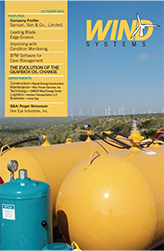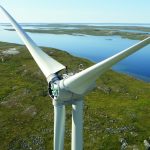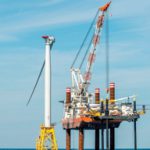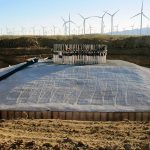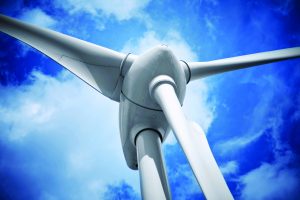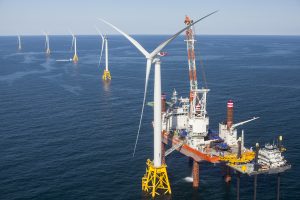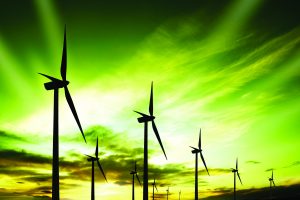What nuggets of innovation are under our noses, held quietly in the minds of the young men and women who simply wish for a different, yet better way to do their job? Read on to be inspired about the future of the wind industry.
Anyone who maintains a wind turbine has a sense that our industry is in constant pursuit of finding innovative ways to improve our working environment. Compact tooling, climb assist and elevators, lighter harnesses with cast aluminum safety hooks, interchangeable replacement parts, and up tower remote condition monitoring are all products of our pioneering industry. Seemingly, just when we found a better mousetrap, we turn a corner as a new product redefines the way we conduct our business. This is not to say that we work in an industry of new inventions – wind power has been around for centuries. Invention by its definition is a unique discovery or finding. Innovation on the other hand, can be an application of someone else’s invention in a new and practical way. Not surprisingly, many of the concepts that improve or enhance our service work have originated from outside our own industry and are a result of someone looking at a problem and applying an existing solution in a different way.
Like many situations, in the wind world necessity is the mother of invention. Among the many wind turbine blade patents out there, you can find dozens of ideas from visionaries who have considered making a blade stronger, more efficient, lighter, and even some that extend and retract when the wind ebbs and gusts. Someone is thinking about insects too, having patented a sensor that measures the insect density in the air and then curtails the turbine production at times when there are too many bugs flying around. Might sound a bit unusual or even impractical, yet those of us who have experienced firsthand the efficiency drop from smashed bugs on a leading edge can appreciate the concept. Imagine then the innovative idea of leveraging rain to clean the blades. Yes, a system that determines the presence of precipitation and adjusts the rotor speed and blade pitch to create the optimum cleaning speed and angle. Perhaps someone came up with that after they were forced to stop during a thunderstorm and buy new washer blades for their truck.
How to quickly and safely change oil in a gearbox sitting 325 feet in the air was the concept of one innovator who found a way to avoid spilling oil when he changed it in his land-based irrigation engines. Both environmentally responsible and faster than using drain lines and toting buckets, his wind turbine oil change system allows for a completely enclosed transfer of oil using compressed air to draw a vacuum in a tank and pull used oil out of the gearbox oil sump high in the air. Looking for a solution that was comparably inexpensive to a crane mobilization, another tinkerer patented a portable crane for servicing wind turbines that can be disassembled into components small enough to be manually carried by a technician. When assembled in just about any existing turbine, the crane is capable of removing individual components such as blade pitch drives, yaw drives, high speed shaft couplings, oil pumps, and gearbox bearings. This would also be a helpful accessory for handling the improved and fully removable generator bearings that are designed to be part of a bolt on subassembly rather than being directly shrunk to the generator shaft. I suspect that when it comes to finding ways to avoid the expense of a crane, innovation is at its best. I applaud the technician who was tasked to design, build, and field test an air scoop for a side-mounted generator air cooler. Rather than produce one that fit from the outside and bolted on in one piece, his strategy was to make it in two parts that could be assembled from inside the nacelle.
We also benefit from companies that have made their mark across diverse industries, particularly those in the fields of high elevation service and heavy industrial bolting. A prominent supplier of ladders for more than 125 years found they could provide the wind industry not just with ladders but with service lifts as well. It was likely a technician who first said, “I wish someone would put an elevator in this thing!” that sparked the idea of designing one that would work well inside a turbine tower. Industrial tool companies have been leading the innovation on turbine tooling, modifying and optimizing for the inherent weight and size restrictions of this often used gear. Taking their cue from technicians in the field, these companies have produced lightweight, compact, and many times customized fittings that have shed hours off torque and tensioning procedures. Even while such companies serve multiple industries, they are able to adapt to the uniqueness of wind turbines and enhance the work of the technician.
It has been said that innovators don’t see different things; they simply see things differently.
The examples here show that that some of the best ideas that have improved working conditions in the wind industry have actually come from people who have seen things differently, and have been inspired by the very people we know who climb, trouble-shoot, and maintain our turbines each and every day. While the laws of physics may dictate where and how high we build wind turbines, we have an unlimited capacity to change our environment for the better, beginning in one where innovation is valued and proactive leadership is there to champion it.
















